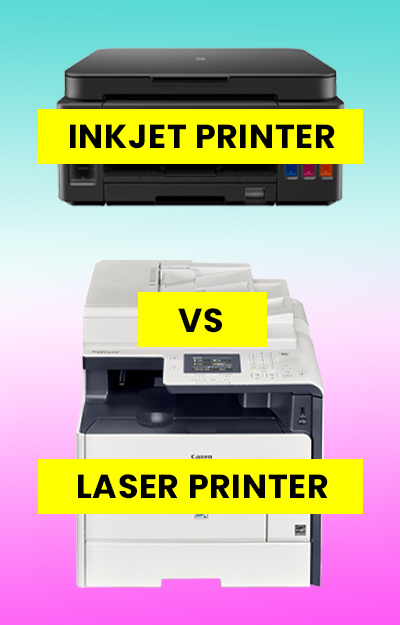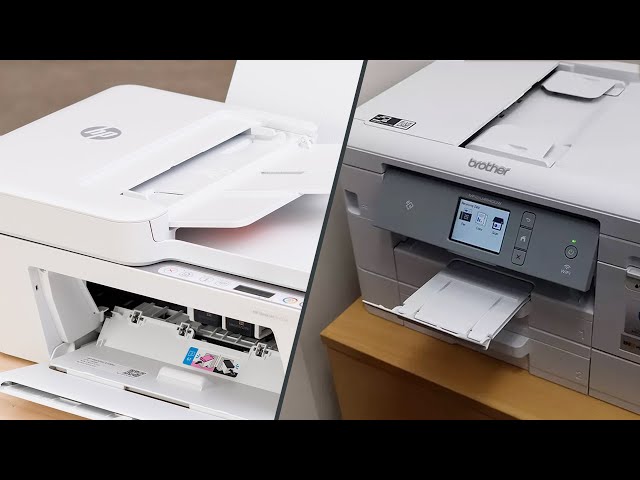Comprehensive Guide: Differences Between Inkjet, Deskjet, And Laser Printers
Introduction
Printing technology has come a long way over the past few decades. From the monotonous dot matrix printers of the yesteryears to the modern-day technologically advanced printers, the industry has seen a significant evolution. Out of the plethora of printer types available in the market today, Inkjet, Deskjet, and Laser printers are perhaps the most common. However, choosing the right printer can become a daunting task given their wide range of specifications, abilities, and price points. This guide aims to differentiate between these three types of printers, helping you make an informed purchase decision.
What are Inkjet Printers?
The Functioning of Inkjet Printers
Inkjet printers, widely recognized for their effective color prints, operate through a specific method. This system comprises the translation of print commands into precise instructions, which are then directed to the printhead. The following provides an idea of the steps involved:
• Print trigger received by the printer.
• The printer driver translates the command to intricate directives.
• The printer's electronics send instructions to the printhead.
• The printhead heats up the ink.
• Heated ink expands and propels onto the paper creating images in a series of small dots.
Weighing Up the Advantages and Disadvantages of Inkjet Printers
Like every other technological device, Inkjet printers come with their set of pros and cons:
Pros:
• High-quality color output with detailing that works well for image prints.
• Versatility in media compatibility. You can use these printers on different media types including glossy paper, canvas, and even CDs.
Cons:
• The cost of cartridge replacement can add up to become a significant long-term investment.
• The ink uses a liquid form that might dry up if the printer is not constantly in use, which can result in unnecessary wastage and potential harm to the printer.
How Do Deskjet Printers Vary?
Distinguishing Deskjet and Inkjet Printers: An Intertwined Relationship
Deskjet and Inkjet printers share a significant connection since both utilize the technology of spraying small ink droplets onto the paper. However, the term 'Deskjet' is a specific branding by Hewlett-Packard (HP) for a range of their printers designed for desktop use. Here's how they relate:
- All Deskjet printers are essentially Inkjet printers; the reverse isn't accurate.
- The primary difference is branding; 'Deskjet' is a subset of Inkjet printers built and marketed by HP.
- Both utilize the same underlying technology of ink deployment on print media.
Weighing the Pros and Cons of Deskjet Printers
All types of printers carry pros and cons tied to their application, and Deskjet printers are no exception. Here’s a detailed breakdown:
Advantages:
1. High Print Quality: Deskjet printers, like their Inkjet counterparts, are recognized for delivering vibrant, detailed print output.
2. Affordable Initial Purchase: They're available at comparatively lower prices, making them a cost-effective choice for initial purchase.
3. Compact Design: Their smaller footprint makes them ideal for home offices or small business settings.
Disadvantages:
1. High Running Cost: Frequent cartridge replacements can make the overall cost of owning a Deskjet printer high.
2. Prone to Ink Drying: Deskjet printers require routine use to prevent ink dry-out, a common problem leading to potential damage and wastage.
Delving into the World of Laser Printers
Grasping the Intricacies of Laser Printer Technology
Unlike their Inkjet and Deskjet counterparts, laser printers employ toners instead of ink. This shift in printing substance technology marked a leap into high speed and high-quality printing for corporate and home environments alike.
A laser printer initiates its task by creating an electrically charged depiction on a drum. The oppositely charged toner is then attracted to the drum, thus enabling its transfer onto the paper. The final act in the process involves a 'fuser' - a heated roller - melting the toner onto the paper, etching a permanent image onto it.
Gauging the Advantages and Setbacks of Laser Printers
- Pros:
* Superior Speed and Precision: Laser printers win the race in speed as well as clarity. They offer brisk printing with sharp text output.
* Extended Toner Lifespan: Unlike ink cartridges that diminish quickly, laser printer toners perform for a more extended period.
- Cons:
* Higher Initial Cost: Laser printers demand a pricier upfront investment compared to Inkjets and Deskjets.
* Compromised Photo Quality: They don't quite match the high-quality photo printing capability of Inkjet printers.
In the struggle between preferential features and budget, understanding the crux of a laser printer's technology and its pros and cons makes it easier to decide if it suits your requirements.
Comparing Inkjet, Deskjet, and Laser Printers: What You Need to Know
Unraveling the key aspects of cost-effectiveness, print quality, speed, durability, and long-term value of Inkjet, Deskjet, and Laser printers.
Evaluating the Cost-effectiveness of Printer Types
When examining the costliness or affordability of each printer type, it's vital to consider both upfront costs and long-term expenses, such as the cost of ink or toner replacements. Here's how the different printer types stack up:
- Inkjet and Deskjet Printers: Initially, these printers come across as budget-friendly options, thanks to their low purchase price. However, the cost can escalate over time, as they require frequent ink cartridge replacements, especially if used regularly.
- Laser Printers: Interestingly, laser printers present the opposite scenario. They require a significant initial investment, seeming expensive at the outset. However, their toner cartridges last considerably longer, making them more economical in the long run.
Comparing Print Quality and Speed
Print quality and speed are other fundamental factors that dictate the suitability of different printer types for diverse printing needs.
- Inkjet and Deskjet Printers: These printers are celebrated for their exceptional color reproduction, making them excellent choices for printing photographs and graphic-intensive documents. However, in terms of speed, they lag behind significantly, compared to laser printers.
- Laser Printers: Predominantly, laser printers are unrivaled when it comes to speed. If you often find yourself printing large volumes of text-oriented documents, a laser printer would serve you best. While their photo printing quality is not as superior as their inkjet counterparts, they do offer crisp and definitive text prints.

Assessing Durability and Long-Term Value
How long your printer lasts is just as crucial as the quality of prints it generates. Let's delve into the durability and longevity of each printer type:
- Inkjet and Deskjet Printers: With moderate usage, these printers can serve you reliably for a few years. However, they are not built for heavy-duty usage and may succumb sooner if frequently subjected to high-volume printing.
- Laser Printers: Recognized for their sturdiness, laser printers often outlast inkjet and deskjet printers. Their toner does not dry up, resulting in lesser chances of damage due to non-use. Despite the higher upfront cost, they offer value for money with their impressive lifespan and reduced maintenance costs.
By dissecting these primary elements that differentiate Inkjet, Deskjet, and Laser printers, you can make a well-informed decision fitting your specific printing requirements and financial disposition.

Conclusion
Choosing between Inkjet, Deskjet, and Laser printers ultimately depends on your particular needs and usage patterns. For high-quality photo prints, an Inkjet or Deskjet would be ideal. However, for faster text printing and long-term economical operation, a Laser printer would be the optimal choice.
Related FAQs about what is the difference between inkjet deskjet and laser printers
What are the prime considerations when selecting between Inkjet, Deskjet, and Laser printers?
Prime considerations when selecting printers include understanding your specific printing needs, assessing the printer's cost-effectiveness, comparing print speed and quality, and evaluating the printer's durability and long-term value.
Which type of printer is more cost-effective in the long run?
Laser printers are generally more cost-effective in the long run. Despite higher upfront costs, their toner cartridges last significantly longer than Inkjet or Deskjet printers' ink cartridges, resulting in lower long-term expenses.
How does print quality differ among Inkjet, Deskjet, and Laser printers?
Inkjet and Deskjet printers are known for excellent color reproduction, making them ideal for photo and graphics-intensive printing. However, Laser printers offer superior quality for text printing, with crisper and clearer outcomes.


